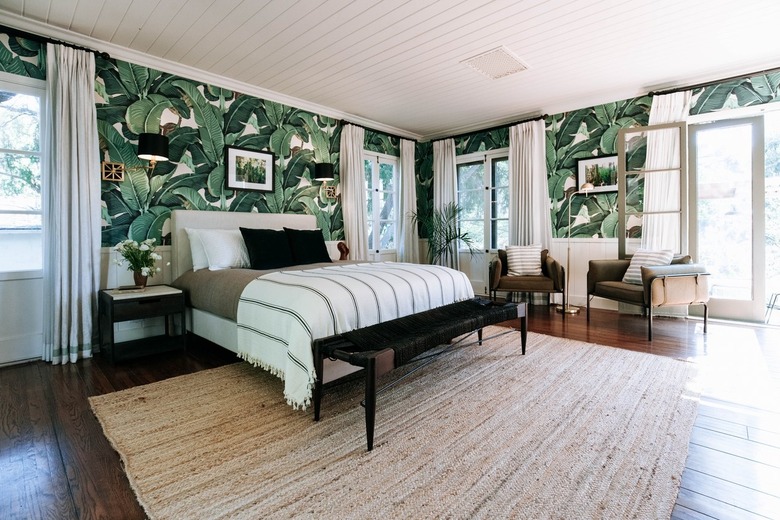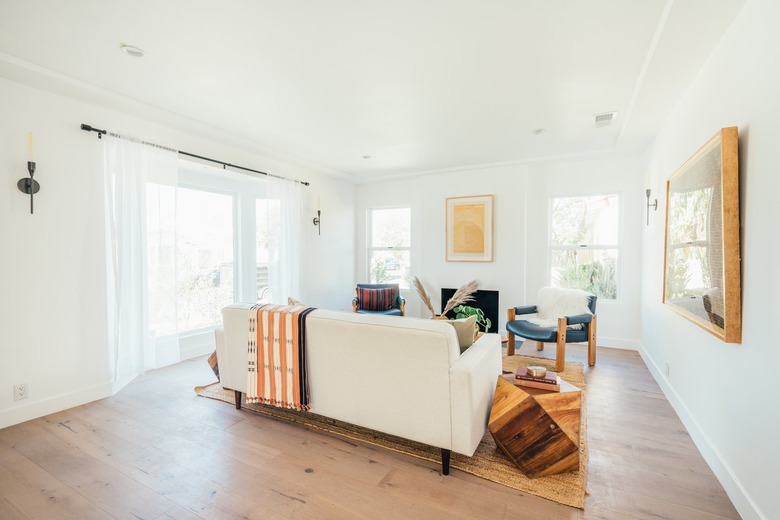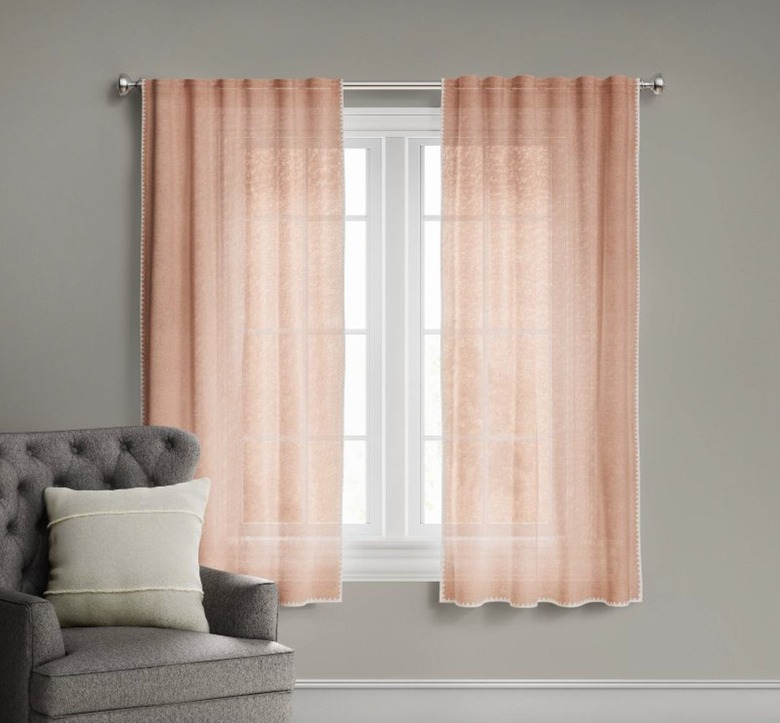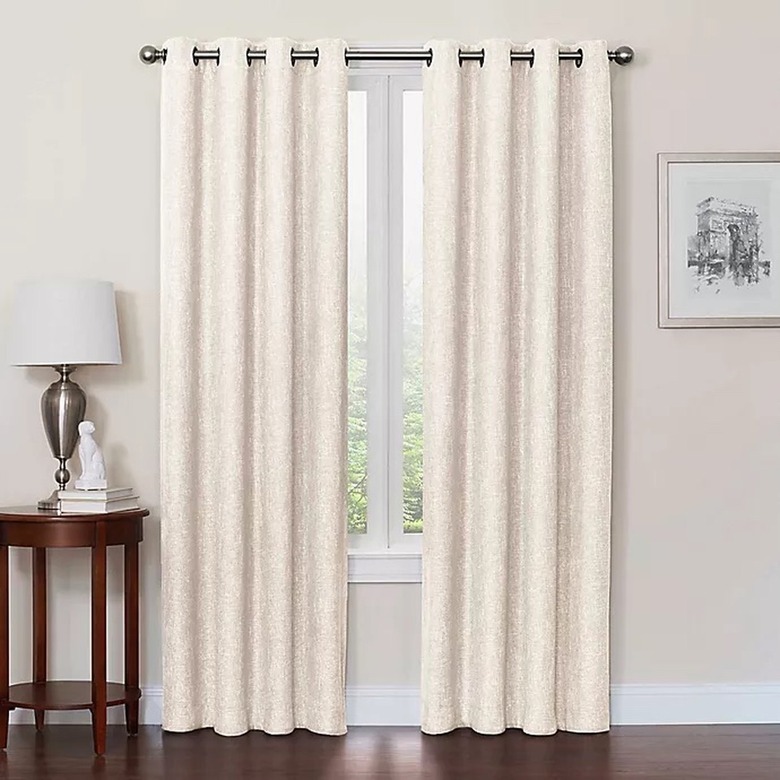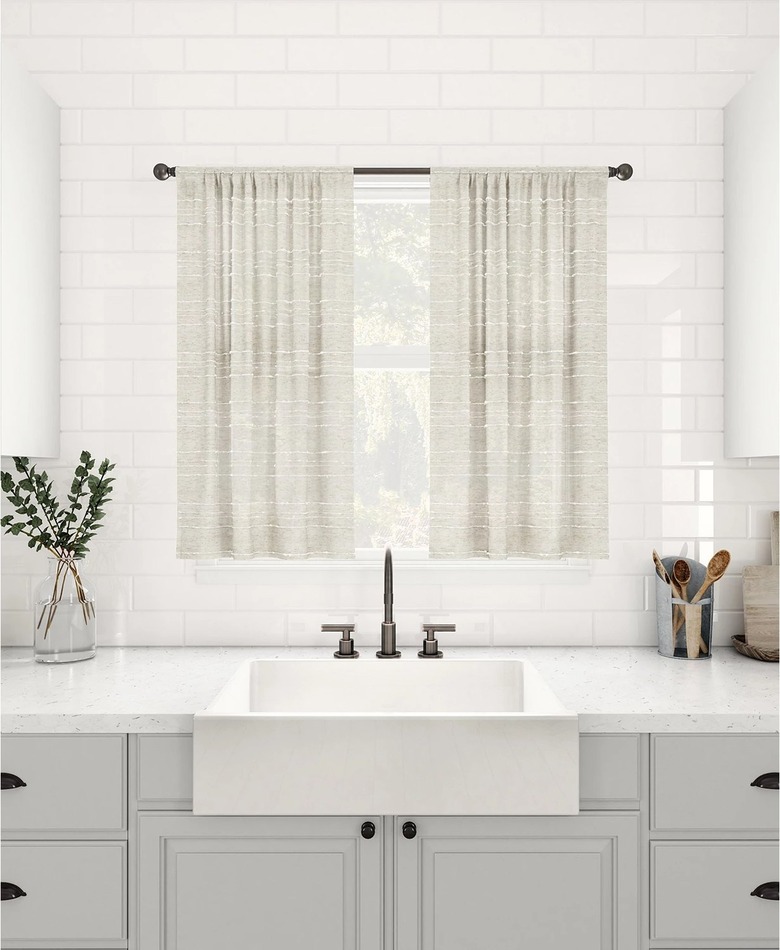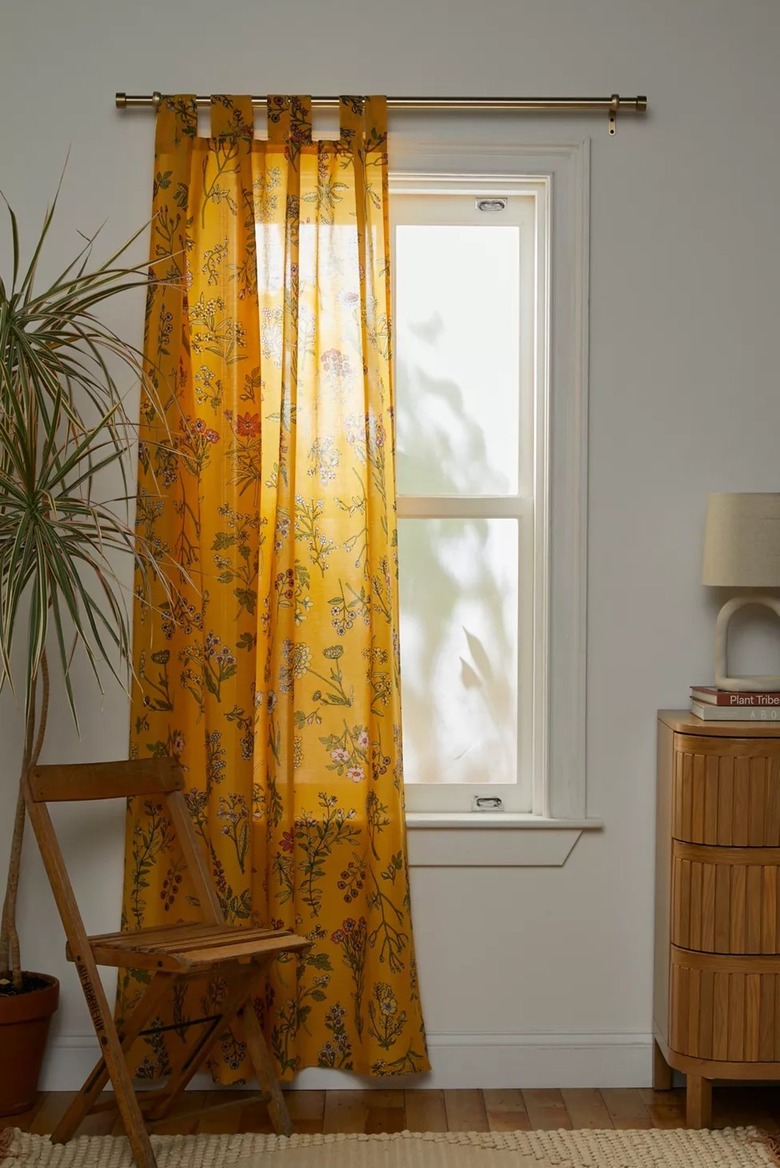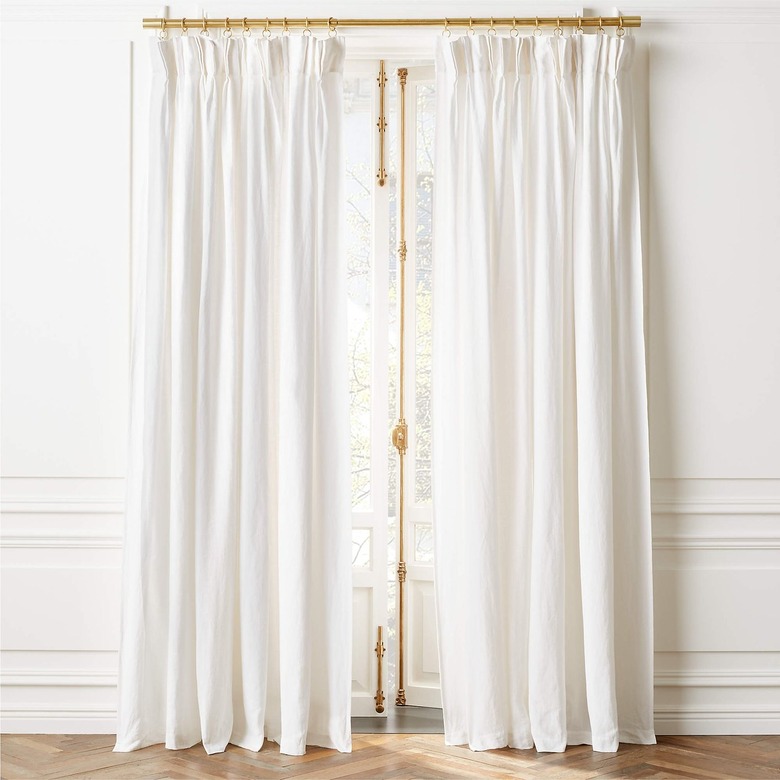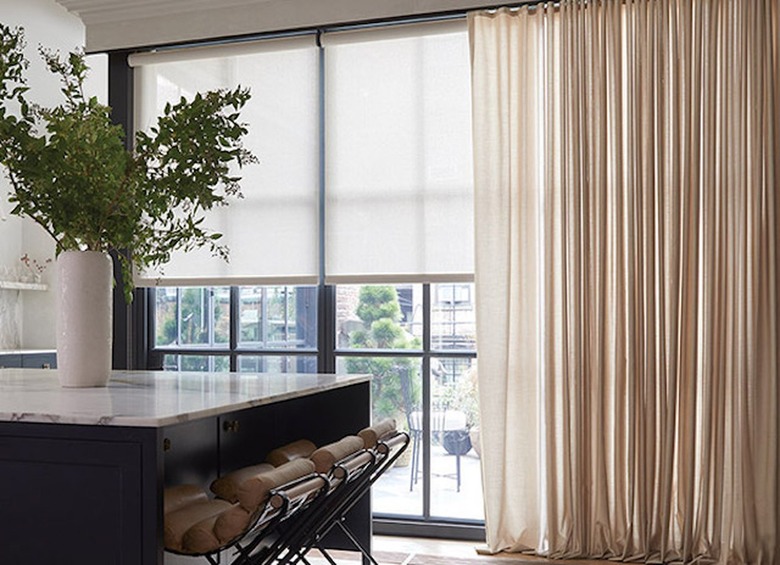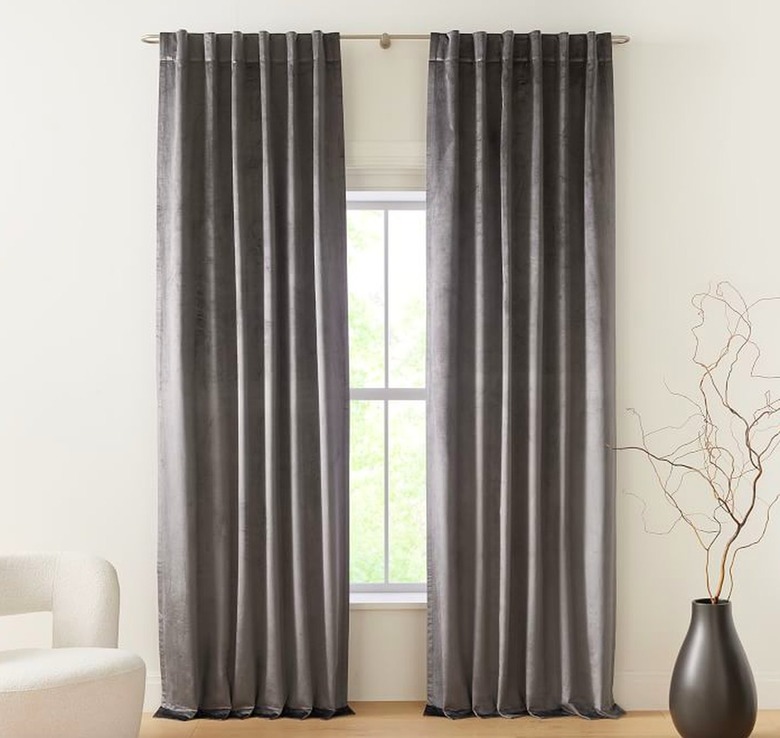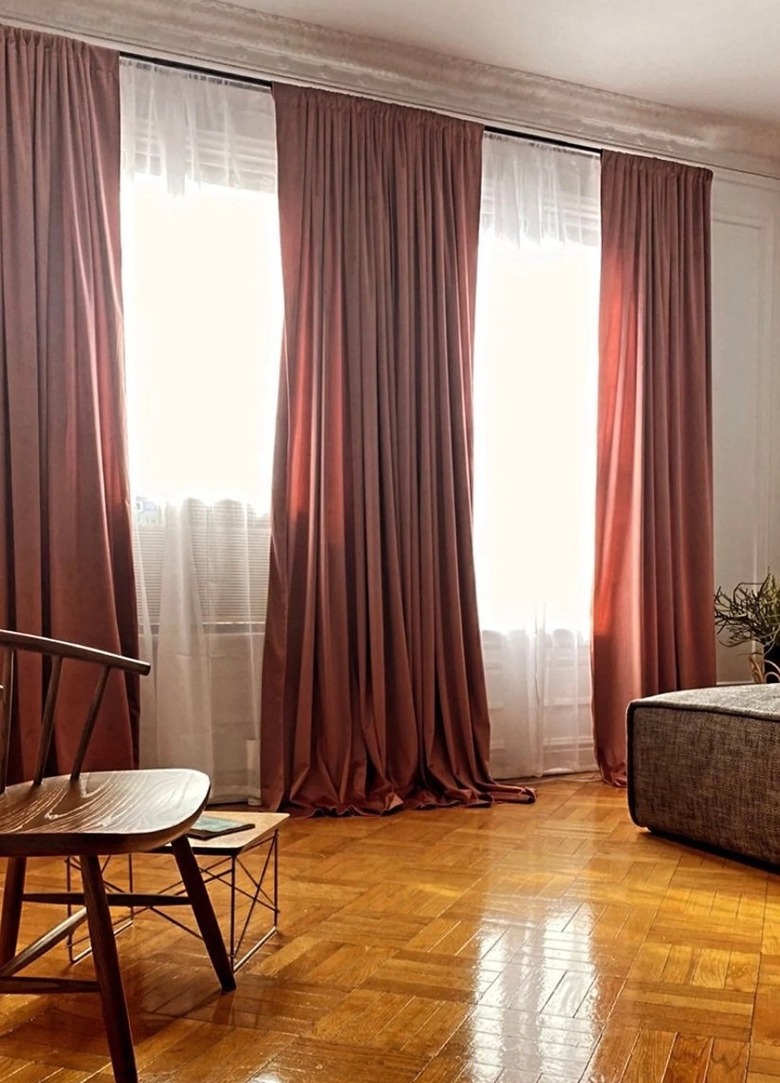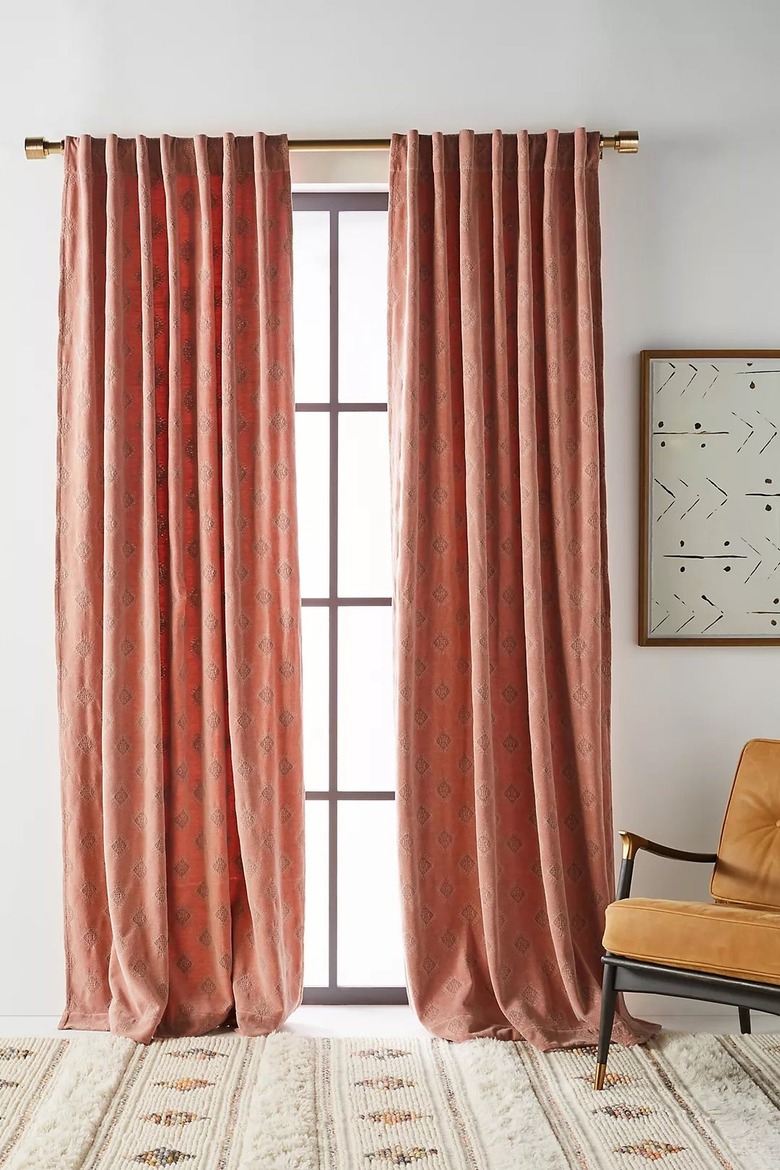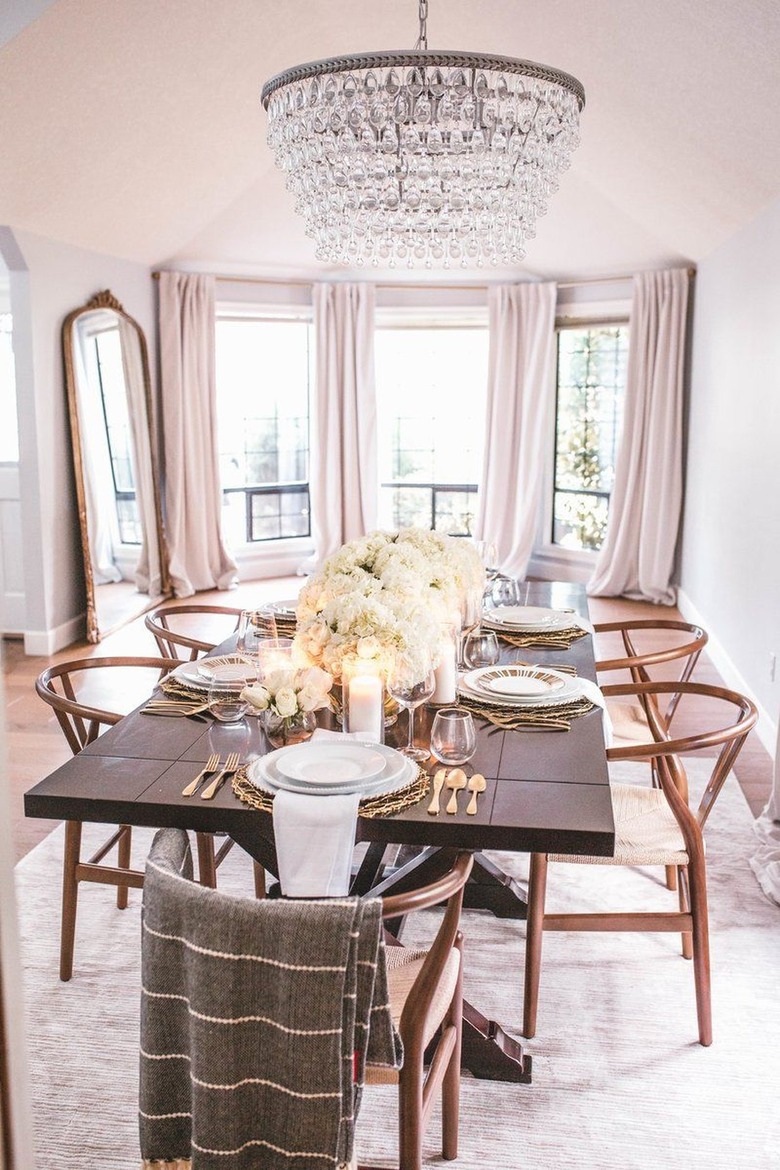Curtains Vs. Drapes — What's The Difference?
We may receive a commission on purchases made from links.
Installing new window treatments is an easy way to transform a room with minimal investment of time, money, and effort. But even before you decide on color, texture, and length of your window coverings, you'll first need to choose: curtains or drapes?
Though these terms are often used interchangeably, there are actually distinct differences between the two. Ready to dress your windows, but not sure which type of treatment you need? Here's how to tell drapes and curtains apart — and decide which ones are best for your room.
Tip
When it comes to drapes vs. curtains, the biggest difference is that drapes typically hang all the way to the floor and are usually made from heavy, light-blocking fabric, whereas curtains may or may not cover the full length of the window and can be made from any material.
Similarities Between Drapes and Curtains
Similarities Between Drapes and Curtains
It's no surprise that drapes and curtains are often confused with one another; they can be very similar. Both drapes and curtains are fabric panels installed on a curtain rod. These panels are used to cover windows and are usually (but not always) sold in pairs. Both treatments come in many different styles, with some popular options including:
- Flat drapery panels with no pleats
- Pinch pleats with three folds of fabric pinched together
approximately 3 inches from the top - Inverted draperies that have pleats at the back of
the fabric - Euro-pleat draperies that have pleats pinched at
the top front of the fabric - Rod pocket designs that have a built-in pocket
for the curtain rod - Fabric tab-top designs that hang on the rod by
the tabs - Tie-top designs that are tied onto the curtain
rod - Grommet
tops that allow the curtain rod to slide through the built-in grommets
Curtains without their own built-in attachment method, such as flat panels and those with pleats, require some type of hardware to keep them attached to the curtain rod. These may include loops or ring clips.
What Are Drapes?
What Are Drapes?
Drapes are long fabric panels that extend from the top of a window (or above the window) to the floor and may even puddle on the floor. Because of their length, drapes can often be custom-size to fit the exact dimensions of a window. Drapes usually come with a lining, which may be light or heavy, and they are often used to block out the light from the sun entirely.
Because drapery panels are generally more formal in appearance than curtains, they tend to be made from stiffer, thicker, more luxurious fabrics, such as silk, velvet, rayon, sateen, satin, and brocade.
What Are Curtains?
What Are Curtains?
The biggest distinction between drapes and curtains is the length. Whereas drapes hang all the way to the floor, curtains may cover all or only part of a window. Curtains tend to appear more casual than drapes, though there are still plenty of luxury curtain options available. Owing to their versatility, curtains come in far more varieties than drapes and are available in a wider range of sizes, styles, materials, fabrics, and patterns.
While you can get curtains in all the same materials that are common in drapes, casual materials, such as linen, wool, poplin, and cotton, are also popular. For sheer curtains, the best options are typically lace, muslin, or voile.
While drapes tend to come in heavy, thicker materials, it is still possible to get thick blackout curtains of any size if you don't want your light-blocking window treatment to stretch to the floor. Alternatively, you can let in lots of light and install sheer curtains that cover only the window itself, or you can pair curtains with other window treatments to let in as little or as much light as you want. For example, putting curtains over blinds or roman shades adds visual interest to a room and gives you full control of your natural lighting level. You can also install sheer curtains under drapes so you can open the drapes to let in filtered light while retaining some level of privacy or open both window treatments to let in full sunlight.
Which Window Treatment Should I Use?
Which Window Treatment Should I Use?
If you like a regal, traditional look, you may want to opt for drapes throughout your home. If you like plenty of natural light and a cozier feel, then you might prefer curtains. It usually makes sense to choose between curtains and drapes on a room-by-room basis. Curtains are typically the best window treatments for rooms like the kitchen and living room, where the atmosphere is relaxed and you want more light. If you have a formal dining room or family room where you entertain guests, drapes made from a heavy fabric can elevate the look.
In bedrooms, many people prefer drapes because they look elegant, block out light, provide privacy, and even dampen sound. On the other hand, if you're an early riser and like to wake up to warm sunlight, curtains may be a better choice to let in the morning light while still providing sufficient privacy from your neighbors.
The Best Curtains to Buy
The Best Curtains to Buy
Explore five of our favorite curtains you can buy online, from short and sheer to full-length blackouts.
1. Threshold Stitched Edge Light Filtering Curtain Panel, $25
2. Bed Bath & Beyond Quinn Blackout Window Curtain Panel, $29.99
3. Clean Window Textured Slub Stripe Cafe Curtain Pair, $55
The Best Drapes to Buy
The Best Drapes to Buy
Explore five of our favorite drapes you can buy online.
1. The Shade Store Cubicle Drapery, starting at $332
2. West Elm Luster Velvet Drape, starting at $155
3. Premier Linens Velvet Drapes, starting at $30
4. Anthropologie Jacquard Chenille Drape, starting at $98
5. Laurel Foundry Modern Farmhouse Solid Blackout Thermal Rod Single Panel, $64.08
References
- Elle Decor: Drapes or Curtains? Why Choosing the Right Window Treatment Matters
- MyDomaine: No, Curtains and Drapes Aren't the Same — Here's How to Choose The Right Option
- Fabric Resource: Guide: Best Fabrics for Windows Treatments, Drapes and Curtains
- Sarah Catherine Design: Draperies 101 – The Ins and Outs of Draperies
- Ballard Designs: Curtain Clips – the Best Way to Hang Your Drapery

